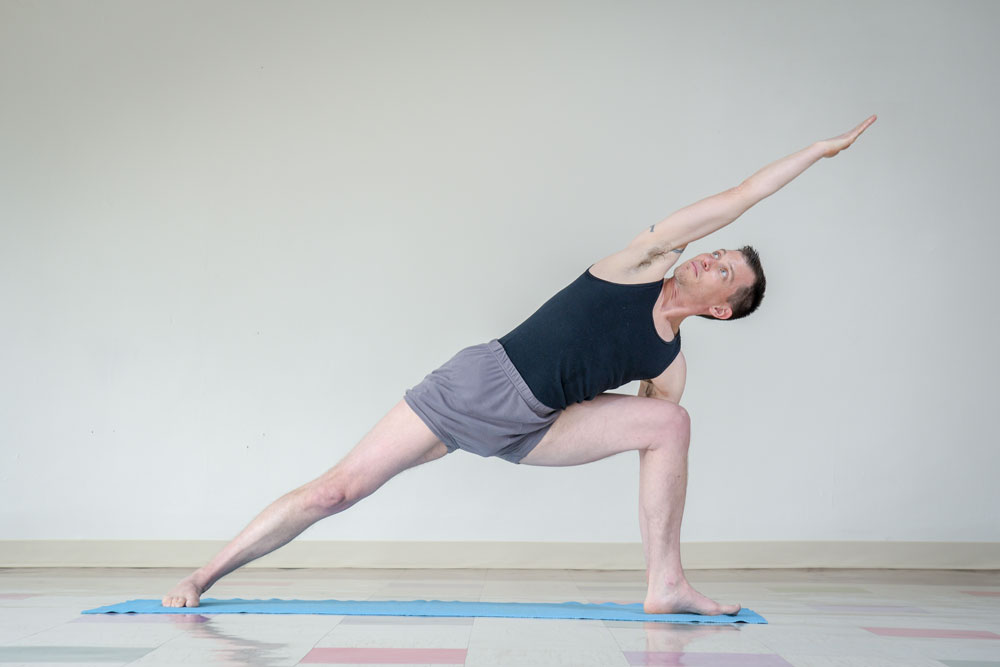Is my knee supposed to be straight?
In such-n-such pose, “is my knee supposed to be straight, like this?”, said every new student. Students always have lots of questions about the logistics of poses. Class is a great venue for answering your questions.
The Iyengar Yoga method is known for a few things, one is the instructions we give students on how to do the poses. All of the instructions are important. The most important reason is because, well, people don’t know how to do poses. So, you have to teach people how to do the poses. Seems logical to me.
The instructions in class also give you something to focus on. And when you are focused your mind isn’t jumping around from this thought to that worry back to that obsession. When I am focused my mind feels calm, I feel calm in my body. When I do this week after week I develop a new habit of focusing the mind. That new habit can spill over into the rest of my life. I then become someone who used to be scattered all the time to someone who is focused and can get things done.
Instructions are important because they 1) teach you the poses and 2) focus the mind.
The answer to students questions about poses are often “yes, but … “. Let’s consider the side angle pose. Seen here. Yes, the head should look up to the top hand but not if it hurts the neck because the chest is collapsed. Yes, the front leg should form a square but not if it’s impossible.

There’s The Pose and then there’s your pose. The two are not always the same. Through instruction students learn what the pose is and then how to get their body to create the likeness of the pose.
In the side angle pose, here, students are not forced or allowed to bend the knee more than they are able because that usually drops the chest, which in turn hurts the neck if they try to look up. In that case we show how to use a block under the down arm so the chest can remain open. This is an example of creating more effortlessness within the effort, which allows for the breath to move and the mind to focus.
Without the block under the down arm the student could hold the breath and wince. Remember that we are trying to create new, good habits. I don’t want to create a wincing habit. I want to create a calm mind, easier breath and focused habit. All of which takes practice and a teacher to show you how to do it. Therefore, the instructions are important, necessary–I’d say they are imperative.